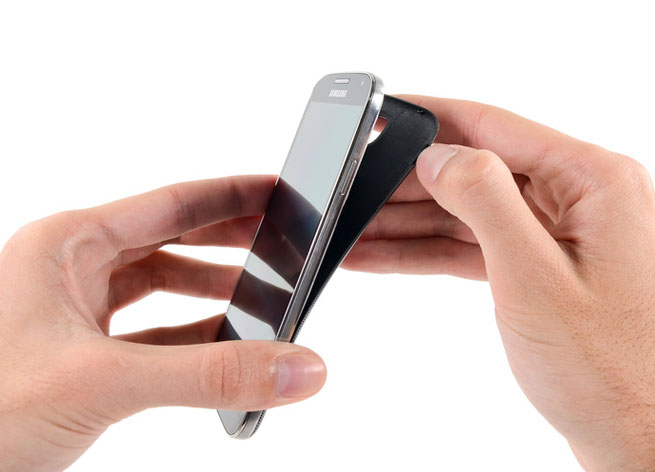Samsung’s Galaxy S4 smartphone is about to hit stores everywhere and will no doubt be a popular phone choice for consumers. Thankfully, if any buyer needs to get the thing fixed, the repairs shouldn’t be too hard, according to iFixit.
[aditude-amp id="flyingcarpet" targeting='{"env":"staging","page_type":"article","post_id":726048,"post_type":"story","post_chan":"none","tags":null,"ai":false,"category":"none","all_categories":"mobile,","session":"D"}']iFixit routinely tears down the hottest new phones to give us a peak inside these devices and let us know if the damned things can be fixed. Among recently launched Android phones, the two top contenders are the HTC One and the Galaxy S4. iFixit gave the HTC One a 1 out of 10 repairability score (the worst possible rating). The Galaxy S4, by comparison, got an 8 out of 10 repairability score in today’s breakdown.
The Galaxy S4 is much easier to repair because it has a removable battery, has just 11 screws inside, and has mostly easy-to-replace components. The only major drawback is the display panel, which is fused to glass and a display frame.
AI Weekly
The must-read newsletter for AI and Big Data industry written by Khari Johnson, Kyle Wiggers, and Seth Colaner.
Included with VentureBeat Insider and VentureBeat VIP memberships.
Here are the most important takeaways:
- The battery can be replaced in seconds, without any tools.
- Very easy to open and access internal components.
- There are only 11 screws in the entire device, all standard Phillips #0 (no proprietary or security sizes).
- Most of the smaller components are modular and can be replaced individually, but several of them are adhered in place, increasing replacement difficulty.
- The glass is fused to both the display and the display frame, increasing repair costs.
- You’ll have to go through the entire phone in order to replace the front panel, since everything is built into the back of it.
And if you really wanna geek out, here are all the main components inside the S4:
- 5″ display with a resolution of 1920-by-1080 at 441 ppi (just shy of the HTC One’s 468 ppi)
- 16, 32, or 64GB of internal storage, expandable with up to 64GB of external microSDXC storage
- 2GB RAM
- 13 MP rear-facing camera and 2 MP front-facing camera
- Snapdragon 600 APQ8064T 1.9 GHz Quad-Core CPU
- Qualcomm MDM9215M 4G GSM/UMTS/LTE modem
- Qualcomm PM8917 power management
- ARM Holdings MBG965H
- Samsung K3QF2F200E 2GB LPDDR3 RAM (we suspect the Snapdragon 600 APQ8064T 1.9 GHz Quad-Core CPU lurks below)
- STMicroelectronics 011914
- ATMEL UC128L5
- Qualcomm WCD9310 audio codec
- Skyworks 77619 power amplifier module for quad-band GSM/EDGE
- Qualcomm WTR1605L seven-band 4G LTE chip (same one found in the Nexus 4)
- SWA GNF09
- Broadcom 20794S1A standalone NFC chip
- Maxim MAX77803 microcontroller
- Silicon Image 8240BO MHL 2.0 transmitter
- Qualcomm PM8821 power management IC
Photos via iFixit
VentureBeat's mission is to be a digital town square for technical decision-makers to gain knowledge about transformative enterprise technology and transact. Learn More

